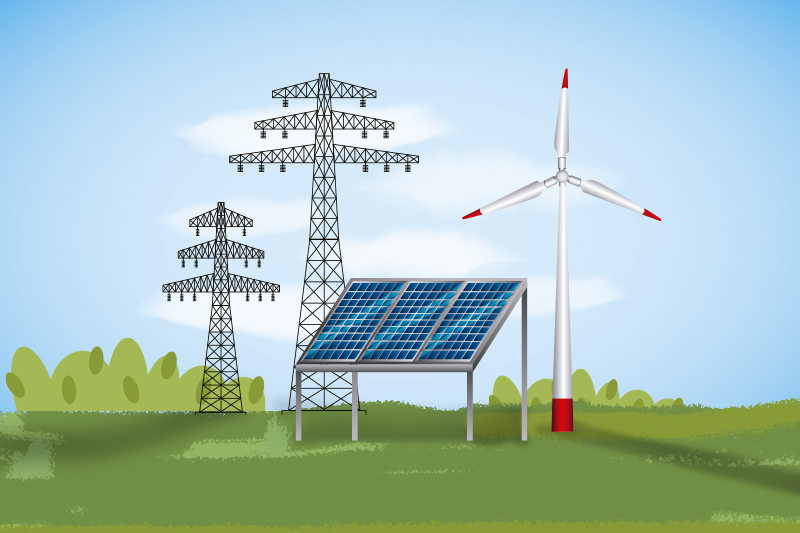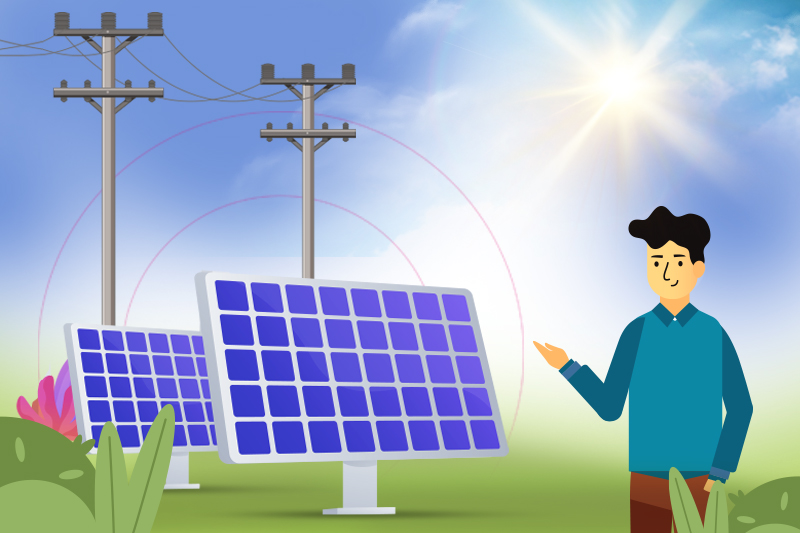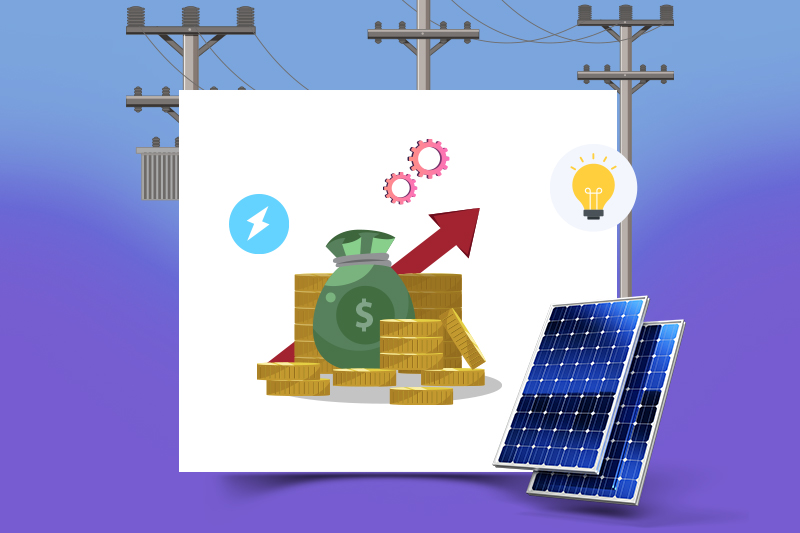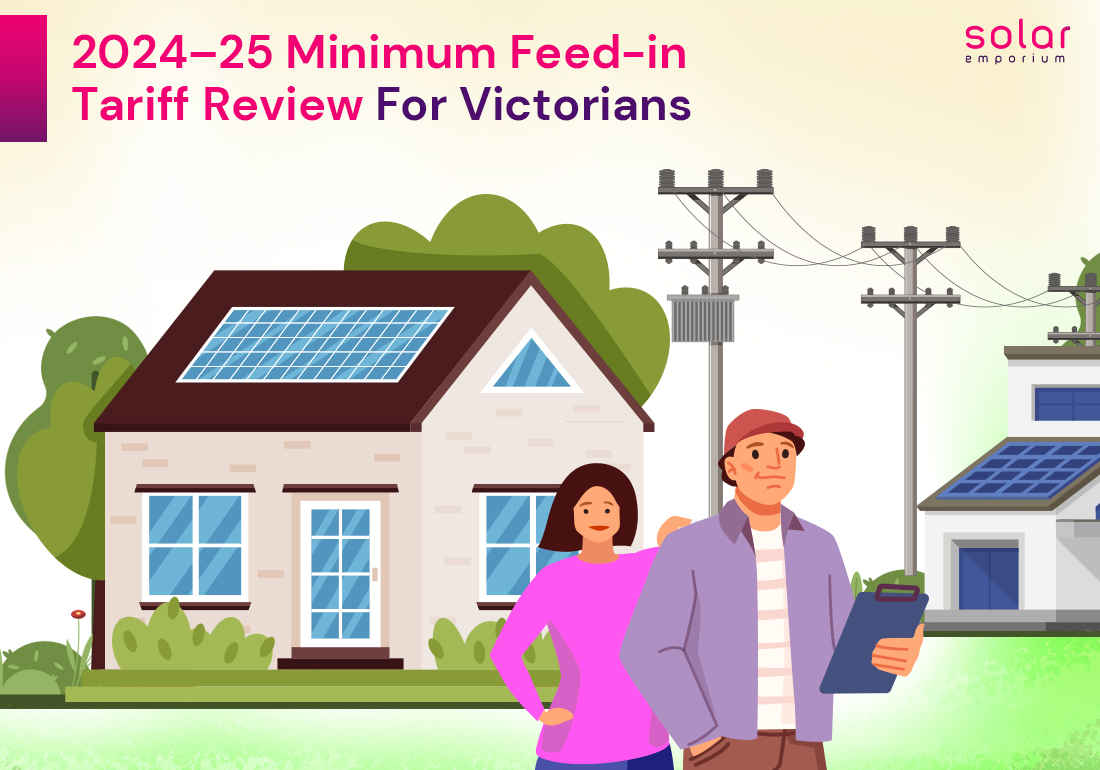There are many reasons why people in Victoria might want to switch to solar panels at home. One reason is that it can save money by using less energy from the grid. Another reason is to use clean and environmentally friendly energy with solar panels.
A significant factor motivating people to go solar is the feed-in tariff. And with feed-in tariff comes minimum feed-in tariff.
Since there is some commotion around it, here goes the 2024-25 minimum feed-in tariff review for Victorians
Even though the amount you get for selling extra energy back to the grid has decreased, it still lets solar panel system owners earn credits on their bills for extra energy.
But first, let’s understand what feed-in tariffs are.
So, What are Feed-in Tariffs?
A feed-in tariff (FiT) is a reward for giving back any extra electricity you don’t use to the electricity grid. It’s also called a buy-back rate, a fixed amount of money for each unit of electricity (kilowatt-hour) you send back.
This money is given as a credit on your bills. If you have solar panels and qualify, you can get paid a solar FiT with our electricity plans.
However, your solar and regular electricity rates have different terms and conditions. If there are any changes to the solar rate, we will let you know before it affects you.
In Australia, feed-in tariffs are payments made to people who produce electricity from solar panels, also known as solar photovoltaic (PV) systems.
These payments are part of state-level programs that aim to support and promote the use of renewable energy.
In Australia, these programs work alongside a federal goal for mandatory renewable energy. These schemes usually focus on supporting solar PV, especially for homes.
Due to capacity limits, they don’t assist with large projects like wind farms or solar thermal power stations.
Feed-in Tariff in Victoria

All electricity companies in Victoria with over 5,000 customers must provide at least an introductory rate for solar energy sent back to the grid.
Some companies may offer more than the minimum rate. There are two types of rates – one that stays the same all day (single rate) and another that changes depending on the time of day (time-varying).
Companies can choose to offer either one or both types.
Single/Flat Rate
This rate applies to electricity sent back to the grid at any time of the day and is the most common option.
On February 24, 2022, Victoria’s Essential Services Commission decided on the minimum rates for sending back solar energy starting from July 1, 2022.
The minimum rate for the single rate option in 2022–23 is 5.2 cents per kilowatt-hour.
On February 27, 2023, the ESC decided on the minimum rates for sending back solar energy from July 1, 2023. The minimum rate for the single rate option in 2023–24 is 4.9 cents per kilowatt-hour.
Time-Varying Rates
Older & Higher Solar Rates in Victoria
If you applied for rooftop solar panels in Victoria between late 2009 and the end of 2011, you could get an extraordinarily high rate of 60 cents per kilowatt-hour until late 2024.
The rate for those who applied in 2012 was 25 cents until December 31, 2016. After January 1, 2017, these customers could access the same buyback rates as other solar users.
Keeping the High Rate
People in Victoria with a high solar rate can change their solar panels or inverters, but the capacity shouldn’t increase. If the home is renovated or demolished, the high rate can still be kept as long as the capacity of the solar panel system doesn’t go up.
However, you can’t take the special rate with you if you move. It stays with the house and goes to the new owner when sold.
Minimum Feed-in Tariff in 2025-25 for Victorians

Every year, the Essential Services Commission decides on the lowest rates for solar customers who share their energy with the grid. Retailers must pay their customers at least the minimum feed-in tariffs, but they can pay more.
They have drafted their proposal for feedback on December 22, 2023. The final decision will be out in February 2024.
Here’s the suggested initial proposal:
For the 2024-25 period, the proposed ‘flat rate’ for minimum feed-in tariff is 3.3 cents per kilowatt-hour. This rate stays the same no matter the time of day or day of the week.
There are also two ‘time-varying’ minimum feed-in tariff options:
Option 1: Customers get credited between 2.8 cents and 8.1 cents per kilowatt-hour, depending on the time of day.
Option 2: Customers get credited between 2.1 cents and 8.8 cents per kilowatt-hour, depending on the time of day.
The rates vary because the periods are different. You can check the table below for more details.
Proposed Minimum Feed-in Tariffs for 2024–25
The table below shows the proposed minimum feed-in tariffs for 2024–25.
| Flat minimum rate | ||
| At all times | ||
| 3.3c/kWh | ||
| Time-varying minimum rates: | ||
| Option 1 | ||
| Overnight | Day | Early evening |
| Weekdays: 10 pm to 7 am | Weekdays: 7 am to 3 pm, 9 pm to 10 pm | Weekdays: 3 pm to 9 pm |
| Weekends: 10 pm to 7 am | Weekends: 7 am to 10 pm | Weekends: n/a |
| 8.1 c/kWh | 2.8 c/kWh | 7.3 c/kWh |
| Option 2 | ||
| Shoulder | Off-peak | Peak |
| Everyday: 9 pm to 10 am | Everyday: 10 am to 2 pm | Everyday: 4 pm to 9 pm |
| 2 pm to 4 pm | ||
| 4.2 c/kWh | 2.1 c/kWh | 8.8 c/kWh |
Wholesale Prices to Decline
Predictions indicate a decrease in wholesale electricity prices, particularly during daylight hours, in 2024-25.
Despite an overall rise in wholesale prices in recent years, the forecasted decline is credited to increased solar panel installation.
This surge in solar panel installations has resulted in lower demand and greater supply during daylight hours, ultimately reducing prices when solar exports are most prominent.
It’s worth noting that while the suggested rates for overnight and early evening tariffs are higher than day rates, they are also expected to decrease.
This adjustment is in line with the overall forecast, indicating lower wholesale prices across all parts of the day.
Why Would the Minimum Tariff Go Down?

The average electricity prices bought in large quantities have increased, and they’re expected to grow even more.
Especially in the evening, when people use a lot of electricity, the prices have increased significantly. This is because of a mix of expensive fuel, power plant issues, and the weather.
But, the number of solar panels on rooftops and big solar farms has grown. This means there’s less demand for electricity during the day because the sun is out, and more electricity is available. So, when solar power is sent to the grid, the electricity prices are lower.
Around half of the costs covered by the minimum feed-in tariff come from the wholesale electricity prices.
These prices are determined in a national market, where suppliers and users decide the costs based on how much energy is available and needed. The government or a regulator doesn’t set these prices.
Electricity prices are low during the day when solar energy is being sent back, but they’re higher at night.
How To Calculate The Minimum Feed-in Tariff
How To Calculate The Minimum Feed-in Tariff
Some rules usually decide the smallest amount is paid for the energy you send back to the grid. These rules are in the Electricity Industry Act of 2000.
Before the end of February each year, the smallest payments for the next financial year are set.
Here’s how it works:
- Our guess includes information about the wholesale electricity market until February. So, for decisions starting from July 1, our guess is based on the market info until February.
- Any changes in the electricity market after the Essential Services Commission decides in one year are part of our decision for the following year.
It means any changes after the final decision will be in the electricity price guesses for the small payments starting from July 1 of the next financial year.
- Solar panels often send power during specific times of the day, so we only use the guessed electricity price during these ‘solar hours’.
Also,
- Money is saved by not sending power over long distances.
- Companies typically pay savings on charges when getting energy from regular sources.
- It depends on the good things for the environment when solar energy is made, like reducing greenhouse gases. They have set this value at 2.5 cents for each kilowatt-hour.
Enjoy The Luxury of Feed-in Tariffs With Solar Emporium
Solar Emporium is Australia’s top choice for solar and renewable energy solutions. From affordable solar packages to EV chargers, we provide personalised solutions to everyone.
Solar Emporium is dedicated to making sustainable energy options accessible to many customers, contributing to a greener and more environmentally conscious future.







